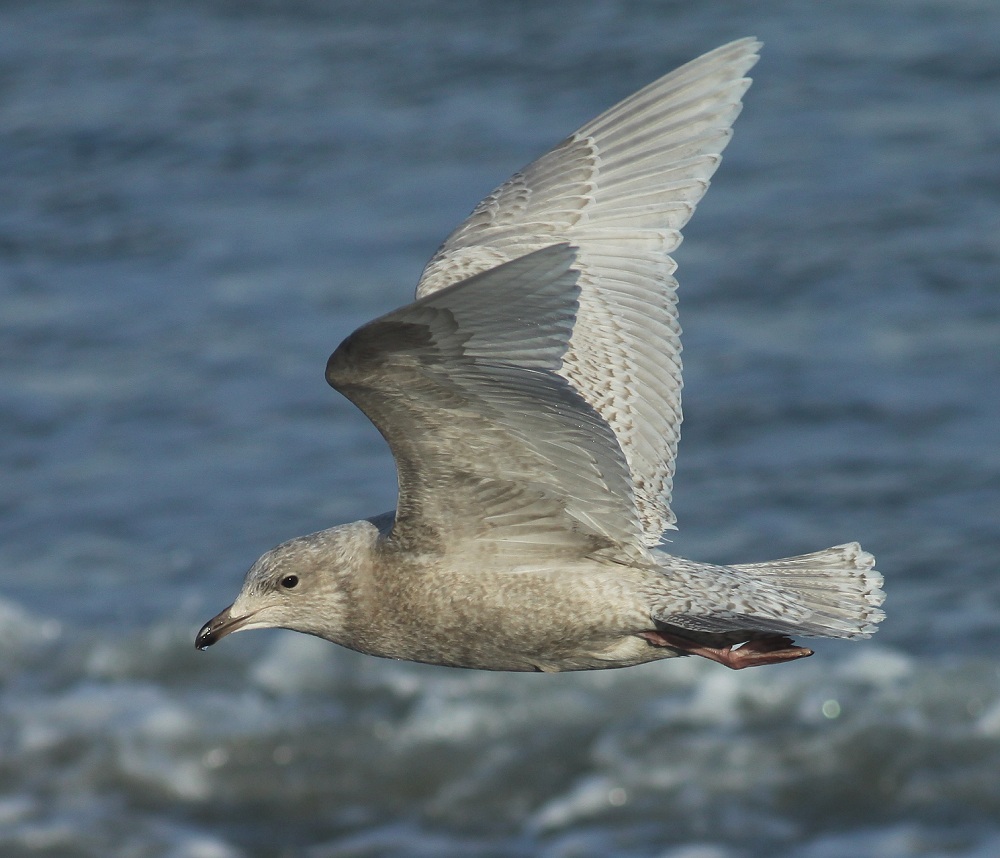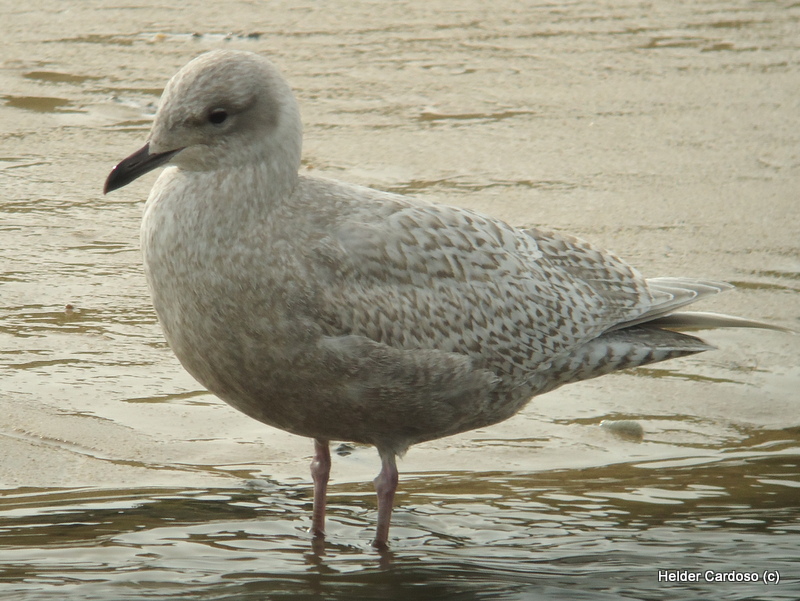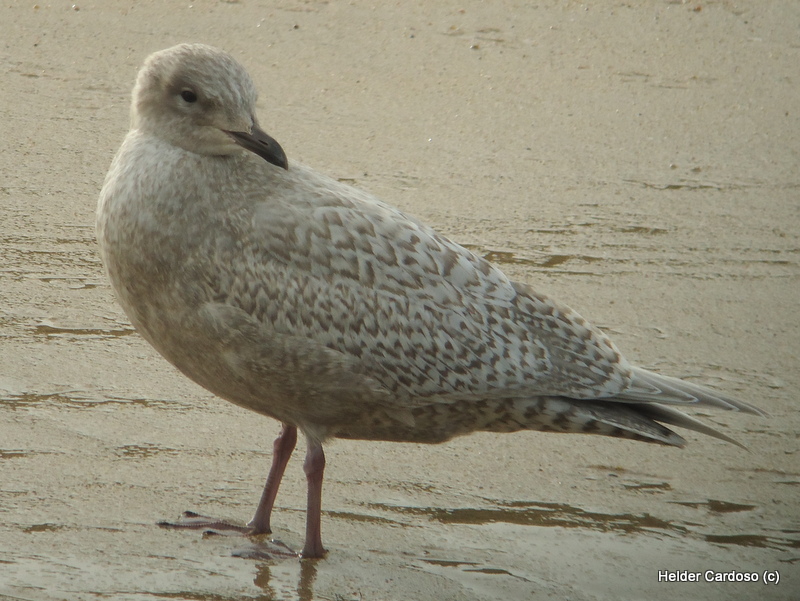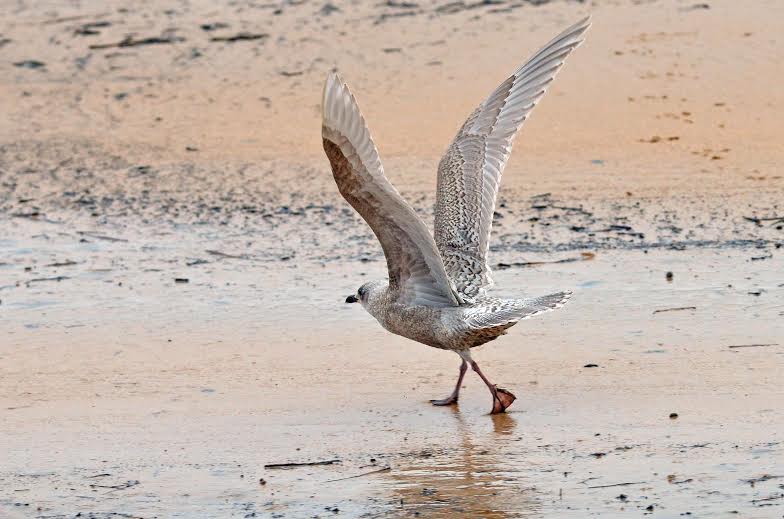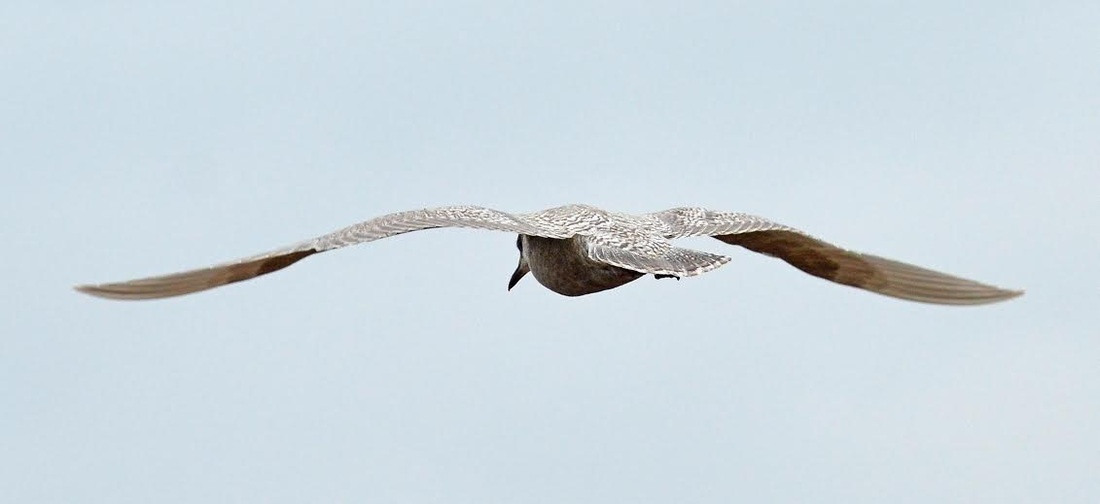Hi Peter (not sure if you're already in the plane),
I know there are kumlieni with pale secondaries, like there are also kumlieni with pale outer primaries, and glaucoides with darker outer primaries. Question will be: "will such birds ever be acceptable as vagrant birds?".
I think when birds show all three mentioned criteria, we find ourselves maybe in the safe zone?
I agree the bird Helder photographed is a very good kumlieni candidate, but we also have to agree on the criteria.
Hopefully 3 criteria will do the job (but still we have to define elements in the set), but if the job can be done on only two, that would be great.
Strongest point probably is pigment in outer primaries, but you should be careful. Personally, I think the bird below, with dark outer primaries, is probably still in glaucoides camp:
